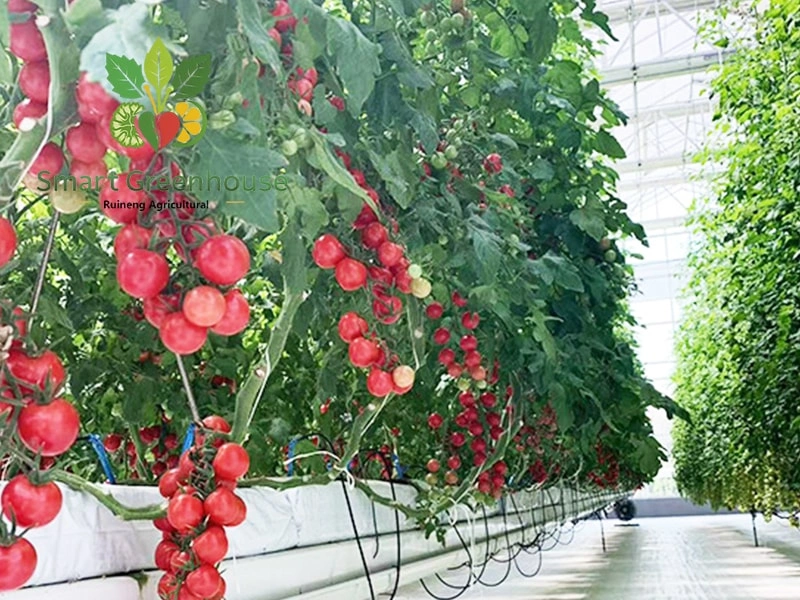A greenhouse system is a specialized agricultural structure designed to create an optimal environment for plant growth by controlling and regulating key environmental factors such as temperature, humidity, light, and air circulation. Modern greenhouse systems integrate advanced technologies like automation, sensors, and IoT (Internet of Things) to enhance productivity, efficiency, and sustainability.
Climate Control: Advanced systems for heating, cooling, and ventilation to maintain ideal temperature and humidity levels.
Automated Irrigation and Fertilization: Integrated systems that deliver water and nutrients precisely to plants, reducing waste and improving growth.
Light Management: Use of natural sunlight combined with supplemental LED grow lights to optimize light exposure for photosynthesis.
Structural Durability: Robust construction with materials like aluminum or galvanized steel to withstand harsh weather conditions.
Integrated Pest Management (IPM): Use of biological controls and minimal chemical inputs to manage pests and diseases.
Data Analytics and Monitoring: IoT sensors and software to monitor environmental conditions and crop health in real-time, enabling data-driven decision-making.
Increased Yields: Controlled environments ensure consistent growth conditions, leading to higher crop yields and quality.
Year-Round Production: Greenhouses allow for continuous cultivation, regardless of seasonal changes.
Resource Efficiency: Automated systems optimize water and nutrient use, reducing waste and environmental impact.
Reduced Labor Costs: Automation and remote monitoring minimize manual labor requirements.
Sustainability: Many systems incorporate renewable energy sources and sustainable practices.
Adaptability: Can be customized to suit various crops and local climate conditions.

Commercial Farming: Large-scale production of vegetables, fruits, herbs, and flowers.
Urban Agriculture: Efficient use of limited space in urban areas to grow fresh produce.
Research and Development: Controlled environments for agricultural research and experimentation.
Specialty Crops: Cultivation of high-value, climate-sensitive crops like exotic fruits, berries, and medicinal plants.
Educational Institutions: Teaching and research facilities for horticulture and agriculture.
| Specification | Details |
|---|---|
| Greenhouse Type | Venlo-style, Gothic-style, or custom-designed |
| Cover Material | Polycarbonate sheets, glass, or ETFE film |
| Height | Eaves height: 3-6 meters; Center height: 4-7 meters |
| Span | 8m, 9.6m, 10.8m, 12m |
| Length | Customizable (typically 20m-100m) |
| Climate Control | Heating, cooling, and ventilation systems |
| Irrigation | Automated drip irrigation, ebb-and-flow systems |
| Lighting | Natural sunlight with supplemental LED grow lights |
| Ventilation | Roof and side vents, exhaust fans |
| Energy Efficiency | Solar panels, geothermal heating, and energy curtains |
| Pest Management | Integrated Pest Management (IPM) systems |
Land Dimensions: The required land size depends on the project scale:
Small commercial greenhouse: 0.5-1 hectare (5,000-10,000 square meters).
Large-scale projects: several hectares (10,000+ square meters).
Local Climate Conditions: Information on average temperature, humidity, sunlight hours, and wind patterns is essential for designing the appropriate greenhouse.
Soil Quality: Soil analysis to determine fertility and potential amendments needed.
Water Availability: Access to a reliable water source for irrigation.
Local Regulations: Compliance with local building codes, zoning laws, and agricultural regulations.
Power Supply: Access to electricity for climate control and automation systems.
Conclusion
Greenhouse systems offer a versatile and efficient solution for modern agriculture, combining advanced climate control, automation, and sustainable practices to create an ideal growing environment. Whether for commercial farming, urban agriculture, or research, these systems provide a sustainable and productive solution for year-round crop production